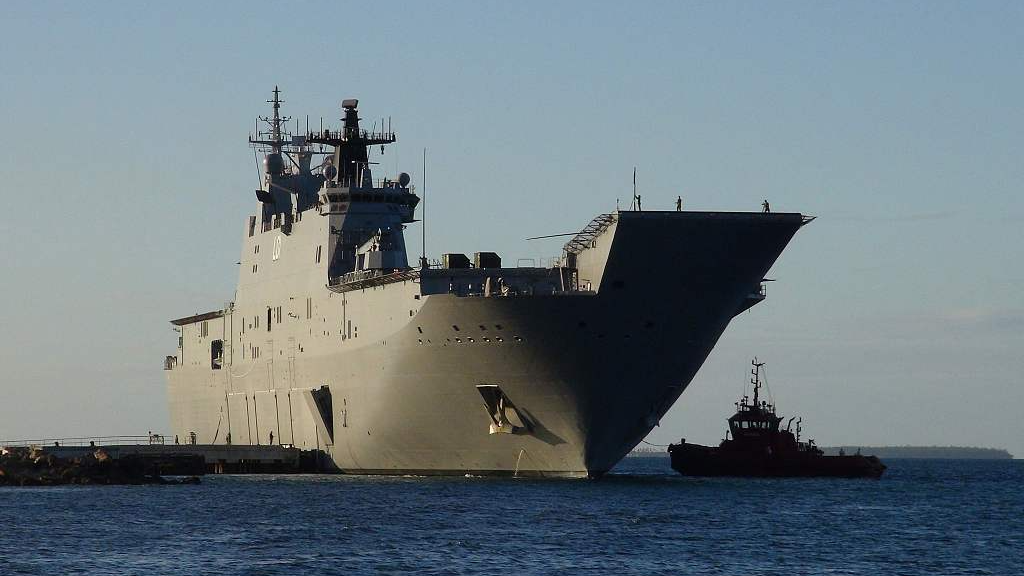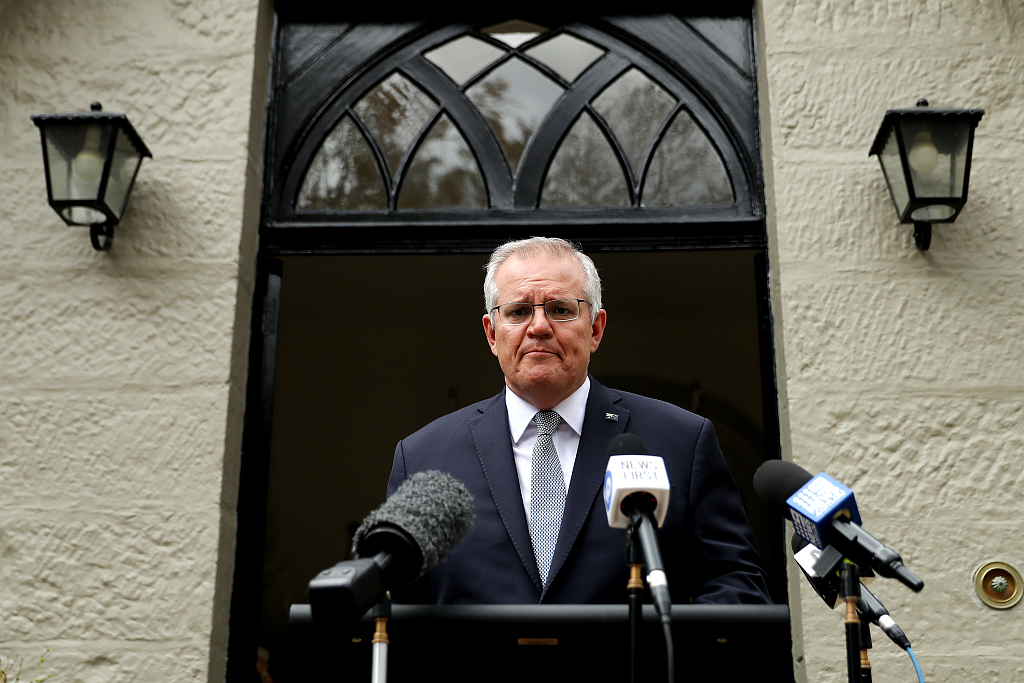
Australian Navy's HMAS Adelaide docked at Vuna Wharf in Tonga's capital Nuku'alofa, January 26, 2022. /CFP
Australian Navy's HMAS Adelaide docked at Vuna Wharf in Tonga's capital Nuku'alofa, January 26, 2022. /CFP
Editor's note: Daryl Guppy is an international financial technical analysis expert. He has provided weekly Shanghai Index analysis for media for the Chinese mainland for more than a decade. Guppy appears regularly on CNBC Asia and is known as "The Chart Man." He is a national board member of the Australia China Business Council. The article reflects the author's opinions and not necessarily those of CGTN.
In times of heightened tension, real or manufactured, it is vital that incident reporting is clear, accurate and comprehensive. Sensational media reporting usually fails to seek answers to the relevant questions but this is no excuse for political leadership failing to insist on clarity. Caution is advised before jumping to conclusions.
The Australian media reported that the Department of Defence on February 17 said that a "P-8A Poseidon detected a laser illuminating the aircraft while in flight over Australia's northern approaches. The laser was detected emanating from a People's Liberation Army Navy vessel. The incident occurred inside Australia's Exclusive Economic Zone."
Updated media coverage reported the Chinese ship directing a laser "towards" the P-8A Poseidon aircraft. The reports give no indication if this was a target lock on the aircraft or simply a range-finding exercise.
"We urge Australia to respect the legitimate rights of Chinese ships in relevant sea areas in accordance with international law and stop spreading false information related to China," spokesman for the Chinese Foreign Ministry Wang Wenbin said at a routine press briefing.
Many reports failed to note that the incident took place in international waters. Australia's exclusive economic zone is in international waters and is not part of Australia's territorial sea waters. The difference between the territorial sea and the exclusive economic zone is that the first confers full sovereignty over the waters, whereas the second is merely a "sovereign right" which refers to the coastal state's rights below the surface of the sea.
Several vital aspects of this encounter remain unanswered, including any ship to plane communications or warnings, and just how near the surveillance aircraft came to the Chinese naval vessels.
These are critical questions that underpin the accuracy of reporting and the appropriateness of the response by Australian leaders.
In many ways, this incident is about freedom of navigation in international waters without harassment from surveillance aircraft. To be sure, all naval activities in international waters are tracked by many countries but there are acknowledged, respected and enforced no-fly zones around all naval vessels.
It is standard operating procedure for all naval vessels to take defensive countermeasures if an aircraft approaches within a certain range. U.S. naval vessels routinely warn off aircraft if they are flying near to their defense perimeter or no-fly zone. Undoubtedly laser range finders are used to determine if the aircraft is approaching too closely. Those in charge of Chinese navy ships also routinely warn off foreign aircraft if they impinge on the defense perimeter no fly zone.
There is nothing unusual, intimidating or aggressive about these standard operating procedures. Both radar and range measuring lasers are used to confirm air space incursions.
We know from similar incidents in the South China Sea that Chinese forces first warn intruders who are too close by radio and then escalate responses if the warnings are ignored. The same vicinity protocols – radio warning first and then escalation – are used by U.S. forces in response to Chinese activity in the vicinity of U.S. warships in the South China Sea.

Australian Prime Minister Scott Morrison speaks during a media conference in Sydney, Australia, October 15, 2021. /CFP
Australian Prime Minister Scott Morrison speaks during a media conference in Sydney, Australia, October 15, 2021. /CFP
The Australian media reports do not show if this sequence of events unfolded in this incident. Elements of the media are taking advantage of this ambiguity, rather than trying to clarify it.
Until there is a more complete and vigorous investigation, the incident carries some uncomfortable similarities to the way the infamous "children over board" reports were used in a previous Australian election campaign. In this 2001 incident, former Prime Minister John Howard and his colleagues claimed that mothers threw their children overboard when a vessel carrying refugees was intercepted. A subsequent Senate inquiry found Howard knew these claims were inaccurate but persisted in making them. The inaccurate claim was used to swing a narrow election into a strong victory.
Prime Minister Scott Morrison's propensity to fiddle with the truth has left him vulnerable to questions of credibility in relation to this incident.
The incident does highlight an essential problem that contributes to the tension in the region. Australia-China relations remain frozen so there is no easy way for either side to pick up the phone to discuss and defuse the situation. This makes it so much easier to weave the incident into the storyline that suits an Australian election campaign where fear of China is becoming a dominant theme.
There are genuine concerns that this incident will be misused in the same way as the false "children overboard" incident was used to bolster the government's election chances.
The propensity to act on the basis of incomplete and potentially inaccurate or manipulated information is not a sound basis for foreign policy.
(If you want to contribute and have specific expertise, please contact us at opinions@cgtn.com.)

